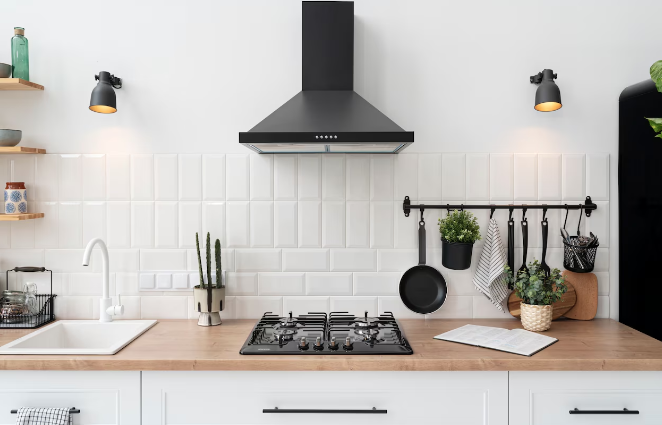When setting up a kitchen, whether at home or in a commercial setting, it’s crucial to understand the distinctions between kitchen appliances and kitchen equipment. These terms are often used interchangeably, but they refer to different categories of items essential for kitchen functionality. This article will explore the differences between kitchen appliances and kitchen equipment.
Definition of Kitchen Appliances
Kitchen appliances are electrical or mechanical machines that assist in food preparation and cooking. They are typically powered by electricity or gas and are designed to perform specific tasks quickly and efficiently. Some common examples of kitchen appliances include:
-
Refrigerators and Freezers: These appliances are essential for preserving food by keeping it at low temperatures to prevent spoilage.
-
Ovens and Stoves: Used for baking, roasting, and cooking, ovens and stoves are vital for preparing a wide variety of dishes.
-
Microwave Ovens: Microwaves are convenient for quickly heating or reheating food.
-
Dishwashers: These machines automate the process of cleaning dishes, saving time and effort.
-
Blenders and Food Processors: These appliances are used for blending, chopping, and pureeing ingredients, making food preparation faster and easier.
-
Coffee Makers: Essential for brewing coffee, these appliances are common in both home and commercial kitchens.
Definition of Kitchen Equipment
Kitchen equipment, on the other hand, includes the tools and utensils that do not necessarily rely on electricity or gas but are still essential for preparing, cooking, and serving food. These items are often manually operated and include:
-
Cutlery: Knives, forks, and spoons are fundamental tools for food preparation and dining.
-
Cookware: Pots, pans, and baking sheets are used for cooking food on stoves and in ovens.
-
Utensils: Spatulas, ladles, tongs, and whisks are used to handle and mix ingredients during food preparation.
-
Mixing Bowls: Essential for combining ingredients, mixing bowls come in various sizes and materials.
-
Measuring Cups and Spoons: Accurate measurements are crucial in cooking and baking, making these tools indispensable.
-
Cutting Boards: Used to protect countertops and provide a stable surface for cutting and chopping ingredients.
-
Colanders and Strainers: These tools are used to drain liquids from food, such as pasta or washed vegetables.
Key Differences Between Kitchen Appliances and Equipment
1. Power Source
One of the primary differences between kitchen appliances and kitchen equipment is the power source. Kitchen appliances typically require electricity or gas to operate. They are designed to automate or facilitate specific cooking and food preparation tasks, making them more efficient and convenient. Examples include refrigerators, ovens, and blenders.
In contrast, kitchen equipment generally does not require an external power source. These items are manually operated and include tools like knives, pots, and cutting boards. While they do not automate tasks, they are essential for various cooking processes.
2. Functionality and Purpose
Kitchen appliances are designed to perform specific functions quickly and efficiently. For example, a dishwasher automates the process of cleaning dishes, while a microwave oven heats food rapidly. These appliances are often multi-functional, offering various settings and features to accommodate different cooking needs.
Kitchen equipment, however, serves more basic and versatile functions. A knife can be used for slicing, dicing, and chopping, while a pot can be used for boiling, simmering, and braising. These tools are fundamental to cooking and food preparation but do not offer the same level of automation or convenience as appliances.
3. Size and Mobility
Kitchen appliances tend to be larger and less portable compared to kitchen equipment. Items like refrigerators, ovens, and dishwashers are typically stationary and require a dedicated space in the kitchen. They often involve installation and may need professional servicing.
Kitchen equipment, on the other hand, is usually more compact and portable. Utensils, knives, and mixing bowls can be easily moved and stored. This mobility makes them convenient for various cooking tasks and allows for flexibility in kitchen layout and organization.
4. Maintenance and Longevity
Maintaining kitchen appliances often involves more complexity and cost. Appliances like refrigerators and ovens may require regular servicing, repairs, and replacement of parts. They also consume energy, contributing to operational costs.
Kitchen equipment generally requires less maintenance and has a longer lifespan if properly cared for. Regular cleaning and proper storage can keep tools like knives and cookware in good condition for years. Additionally, kitchen equipment does not incur ongoing energy costs.
Conclusion
Understanding the difference between kitchen appliances and kitchen equipment is crucial for anyone setting up a kitchen. Kitchen appliances are powered machines designed to automate specific tasks, offering efficiency and convenience. In contrast, kitchen equipment comprises manually operated tools essential for various cooking and food preparation processes. Both categories are vital for a fully functional kitchen, but they serve different purposes and have distinct characteristics.
Investing in the right mix of kitchen appliances and equipment tailored to your needs can enhance your cooking experience, improve efficiency, and ensure that your kitchen runs smoothly. Whether you’re equipping a home kitchen or a commercial establishment, recognizing these differences will help you make informed decisions and optimize your culinary operations.
